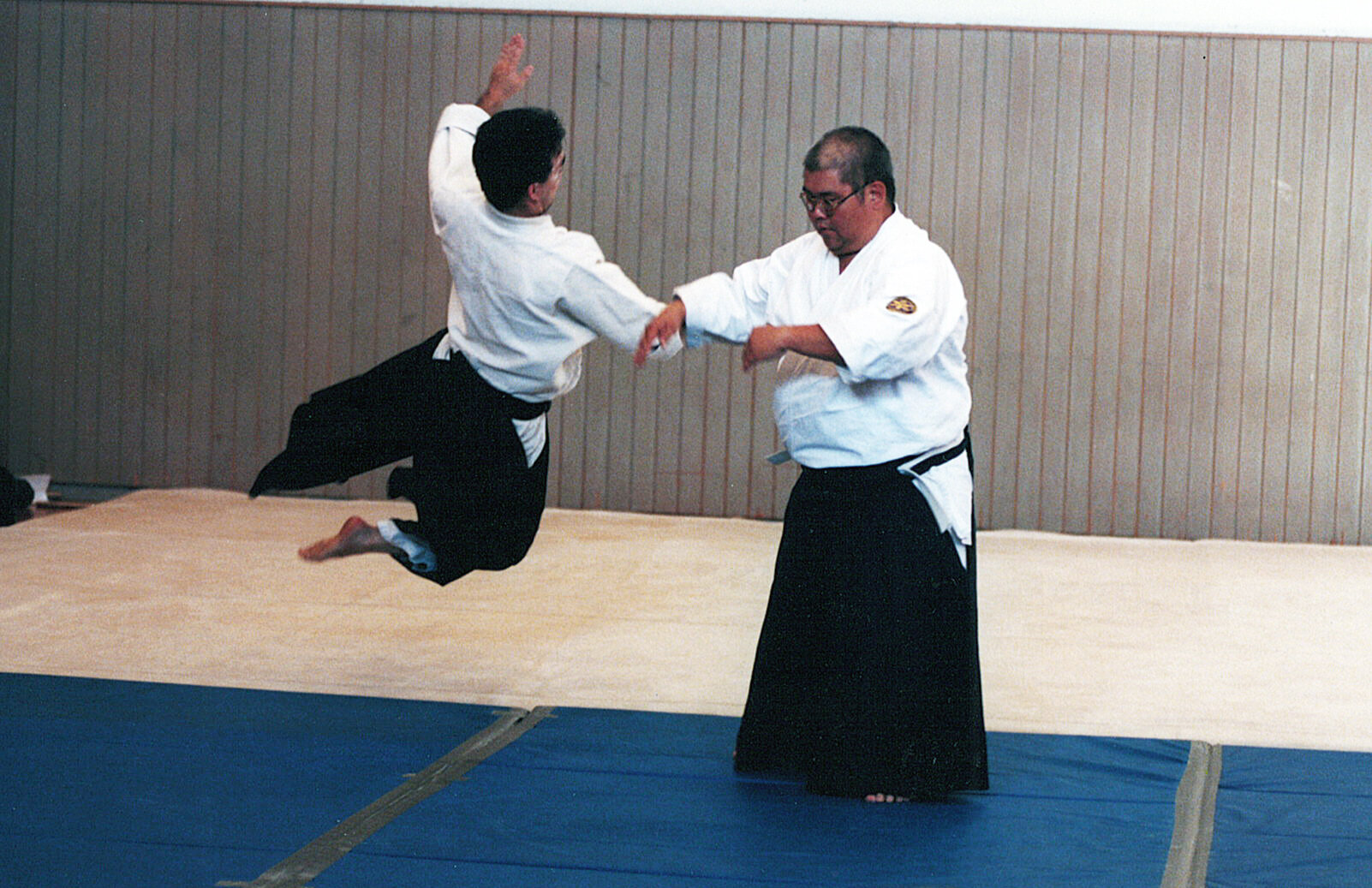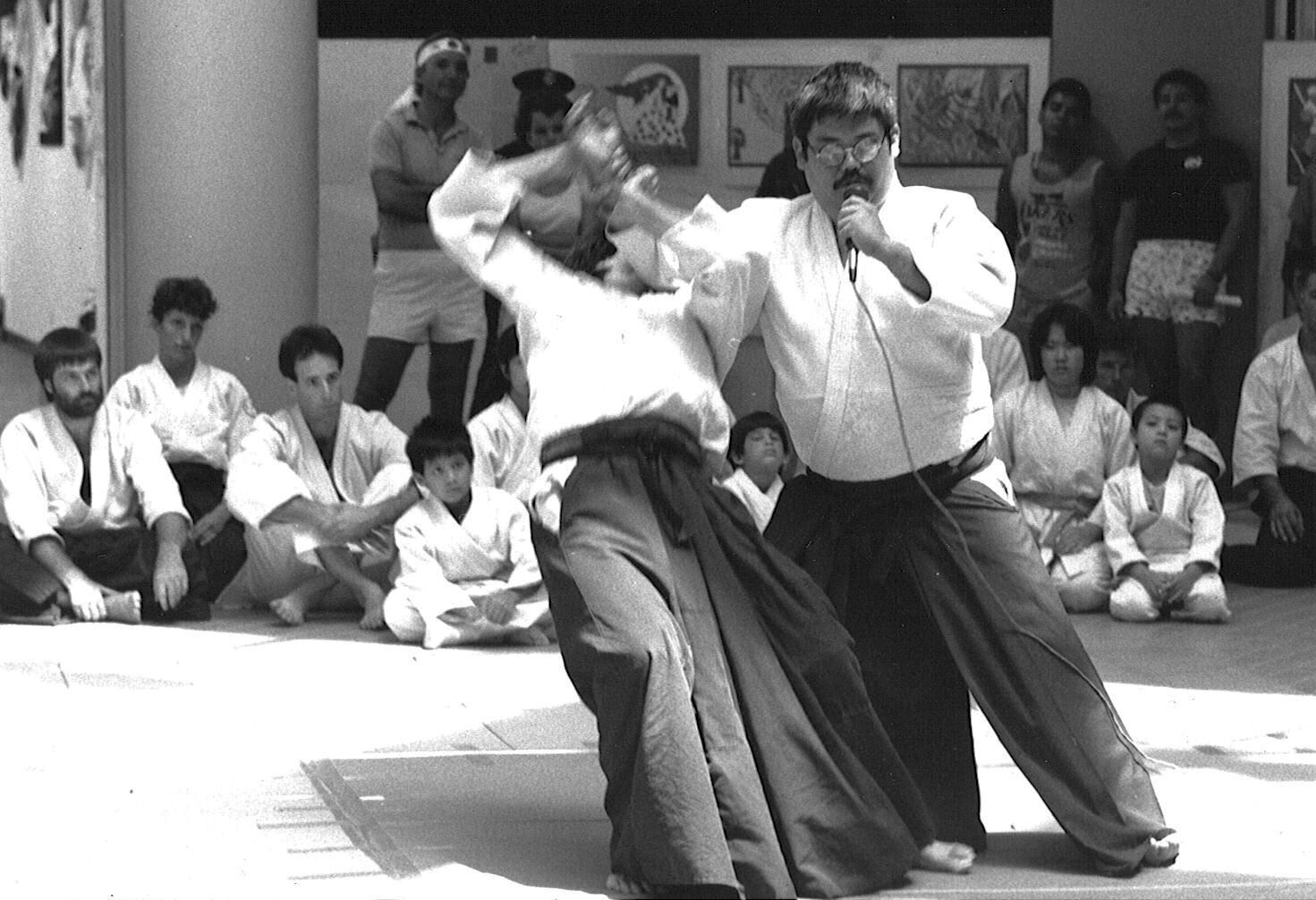This article originally appeared in the November issue of El Budoka Magazine
The lethalness of budo should be balanced out with the humbleness of our humanity. As we study budo, we come to understand that the line between life and death is kiwadoi (際どい) or quite “narrow.” The more we train, the more we come to realize that all budo techniques are lethal. Understanding that the line between life and death is narrow, we balance out budo’s deadliness with atamagahikui (頭が低い) or “humbleness.” Atamagahikui directly translates as “lowering one’s head.” We bow our head out of respect for the power that we wield. The Greek philosopher Seneca once said, “With great power comes great responsibility.”
More and more today, people seem to be focusing on quantity over quality or style over substance. Chinese philosopher Lao Tzu said, “Those who know do not speak. Those who speak do not know.” In showing everyone how much we “know,” we might just be advertising how much we really don’t know in the process.
The Zen story Nothing Exists illustrates the need for humbleness. Yamaoka Tesshu was one of the greatest swordsmen of the 19th Century and he was also a lay Zen student who became enlightened when he was 45 years old. When Tesshu was young, he was very accomplished as a swordsman but also as a student of Zen. Thinking very much of himself, he wanted to show off his prowess in Zen and visited the wise priest Dokuon of Shokoku temple. While talking with Dokuon, Tesshu proudly stated, “The mind, Buddha, and sentient beings, after all, do not exist. The true nature of phenomena is emptiness. There is no realization, no delusion, no sage, and no mediocrity. There is no giving and nothing to be received.” Dokuon sat quietly introspectively nodding his head while listening and smoking a pipe. For some time, they both sat there as if they were letting Tesshu’s words linger in the air. Then, all of a sudden, Dokuon whacked Tesshu on the head with his bamboo pipe and just as quickly as he hit him, he sat back down and continued to quietly smoke. The shock of Dokuon’s hit made Tesshu quite angry and he shouted, “What did you do that for?” Without looking up, Dokuon quietly said, “If nothing in fact exists, then where did this anger come from?” Realizing that he had more to learn and had not yet attained enlightenment, Tesshu bowed, thanked Dokuon and left the temple.
Prior to the Meiji Era, martial arts teachers did not publicly promote themselves. If someone wanted to see another’s prowess, they had to ask for a shobu (勝負) or “duel.” Typically, if one lost a duel then decorum would dictate that they would have to become the winner’s student by blood oath. Likewise, if the teacher lost then he might have to give up his school to the victor and become his student by blood oath. Both people would have to remain that other person’s student until that person discharged them from their obligation. In the eyes of samurai culture, breaking a blood oath was justification to be killed without repercussion.
Teachers of old also did not publicly demonstrate because their arts were supposed to be exclusive and most only taught family members or clan members. In fact, Jiko PR (自己PR), the word for “self-promotion” in Japanese is relatively new in the last 30 years. Teachers of old thought that if they were to publicly demonstrate their ability then a clever rival would steal or figure out their technique and eventually use it against them in a duel.
Today, we don’t engage in duels so the need to hide our prowess isn’t necessary and, in fact, it is quite the opposite. Today, the current Jiko PR culture dictates that we be almost better at self-promotion than we are at technique. It is erroneously thought that that the person who bangs their drum the loudest is often thought to be the best.
Self-promotion has its merits as it can bring more awareness to the arts and, hopefully, more students to the art. After all the main goal of any good teacher or school is preserve the teachings for future generations. However, like the lethalness of the budo, self-promotion we must balance out with humbleness and respect.
The way of budo is jibunsagashi (自分探し) or “A journey of self-discovery.” The old samurai maxim: “Yaki-tachi wo saya ni osamete, masumasu masurao no kokoro wo togarikeri” demonstrates this and admonishes us “To keep your tempered sword in its scabbard and first polish a heart of courage.” Drawing the sword is likened to showing off. Like Lao Tzu’s warning and Tesshu’s story, if one wants to show their true mastery, then they should demonstrate it with how much they don't know rather than telling others how much that they think they know.
In an interview, Furuya Sensei once stated, “Although I am just a human being. I want to model myself after the sword; always straight, always true, and very decisive. Something that doesn’t have an outer obvious strength that we look for today but something that has an inner strength which is hard to see unless you really know it and can appreciate it.” Thinking about Furuya Sensei’s words, our true power doesn’t come from what we can do but more so from what we choose not to do. True inner strength is choosing the harder road of humility rather than the more gratifying road of arrogance.
The founder of Aikido, Morihei Ueshiba often talked about the swordsmanship concept of katsujinken satsujinto (活人剣殺人刀) or “The sword which gives life or the sword which takes life.” Much like the techniques in budo, the sword alone is an inanimate object and can take life, but in the hands of a person who has humility, it can become a sword which gives life as well.
In Furuya Sensei’s book Kodo, he writes about the parable of the rice stalk: “The young rice stalk stands straight, proud and strong. As the rice stalk matures and becomes wiser, it ‘bows’ its head towards the earth in humility and respect.” As warriors, we bow our heads because we don’t take the graveness of death and suffering lightly. Therefore, the more experienced a warrior becomes, the more humble and respectful they become, not the opposite.
Read the Spanish version of this article here: El Budoka























